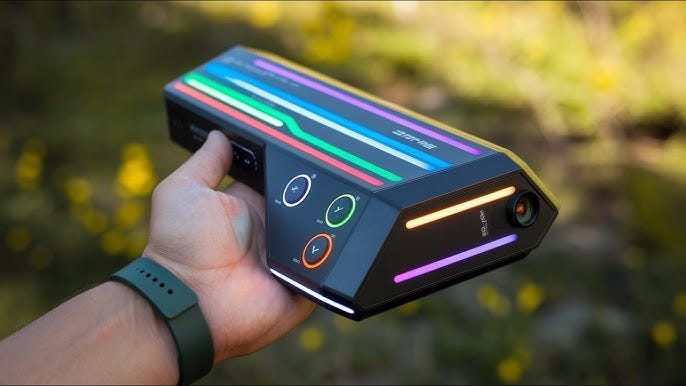Each year brings a flood of new devices promising to simplify daily routines. Most of them fade quickly, replaced by newer ideas. But sometimes a quiet innovation arrives that changes habits without fanfare. In 2025, that shift isn’t about flashy screens or voice commands—it’s about subtle tools that blend into everyday life. These are the kinds of changes that, much like a big small game online, depend on timing, balance, and small decisions that add up to something larger.
The Hidden Impact of Small Technology
For a long time, progress in consumer technology meant bigger features: higher resolution, faster processing, louder marketing. The pattern is familiar. But 2025 has started to move in the opposite direction. Instead of adding complexity, many new gadgets focus on integration and quiet efficiency.
People no longer want another device to manage—they want one that disappears into the background. The most interesting technologies this year are not the ones that dominate your attention, but the ones that free it. They manage your environment, adjust to your habits, and collect minimal data while doing so.
This shift shows a deeper change in how society views technology. For years, convenience was measured by how much a gadget could do. Now, it is defined by how little you need to think about it.
Function Over Novelty
The “gadget you didn’t know you needed” is rarely the product of hype. It solves a small, specific problem. Sometimes it’s a tool for organization or time management. Other times, it quietly improves safety, energy use, or accessibility.
In 2025, many of these tools share a few traits: simplicity, autonomy, and adaptability. They are designed to work across ecosystems rather than lock users into one. They connect to existing systems, learn patterns, and make small corrections—without constant manual control.
This trend reflects a kind of technological maturity. Early digital culture celebrated experimentation. Now, people are asking for stability. The gadget that earns a place in your home today must prove its worth through consistent function, not novelty.
How We Define “Need” Has Changed
In past decades, owning a device often meant status. The latest phone, the newest wearable, or the smartest appliance served as proof of keeping up. That narrative is fading. What matters now is usefulness and comfort.
People are beginning to evaluate technology the way they evaluate furniture—it has to fit the space and serve a purpose. The best gadget feels invisible once it’s installed. It should reduce effort rather than create new routines.
This attitude has also affected product design. Developers are paying more attention to what users don’t want: noise, unnecessary data collection, or complicated settings. The “need” in 2025 is not about capability but about mental simplicity.
The Rise of Adaptive Devices
A major feature of current innovation is adaptability. Instead of setting schedules or commands, users allow devices to adjust automatically. The goal is not to predict human behavior perfectly but to respond flexibly to it.
For instance, some household tools now use minimal sensors to detect use patterns and optimize power consumption. Health monitors collect just enough information to provide guidance without constant alerts. Even transportation-related gadgets are evolving to focus on efficiency and coordination, not just performance.
What makes these tools interesting is that they are less about control and more about cooperation. They learn quietly, improve gradually, and disappear into routine.
A Shift Toward Digital Modesty
There is also a growing fatigue with constant connection. After years of chasing more screens, people are looking for ways to limit exposure. Devices that respect focus and privacy are gaining ground.
This modesty doesn’t mean rejecting technology altogether—it means using it more selectively. Tools that blend physical and digital functions are becoming common. Simple interfaces, tactile feedback, and energy-efficient design are replacing complex apps and endless notifications.
In a way, this mirrors how societies adapt to any powerful tool. Once the excitement fades, attention turns to refinement and integration. The gadget that stands out in 2025 is not loud or futuristic—it’s calm and balanced.
The Economic Context
Economic pressure also shapes what people buy. Inflation and environmental concerns have made disposable technology less appealing. Consumers are keeping devices longer, repairing them when possible, and choosing modular designs.
Companies have noticed. Some now build products that can last several years without major upgrades. Longevity has become a selling point, not an afterthought. This move toward durability also supports sustainability goals, reducing electronic waste and resource demand.
It’s a quiet revolution—one that trades rapid turnover for long-term value.
The Broader Meaning of Innovation
The word “innovation” often brings to mind radical invention. But in practice, most progress happens through small improvements. The gadgets defining 2025 reflect that truth. They evolve from earlier designs, refining rather than reinventing.
This kind of progress can be easy to overlook. A tool that simply works, day after day, attracts little attention. Yet these are the changes that define everyday life more deeply than any headline-making launch.
Conclusion: The Value of the Unseen
The most transformative gadgets of 2025 are not about spectacle. They are about subtle shifts in how people live and work. Their success depends on fitting into ordinary routines and solving small problems that matter more than we realize.
In that sense, the “gadget you didn’t know you needed” teaches a broader lesson about technology itself. Progress doesn’t always announce itself with fanfare. Sometimes it arrives quietly, in an object you hardly notice—until you try living without it.






